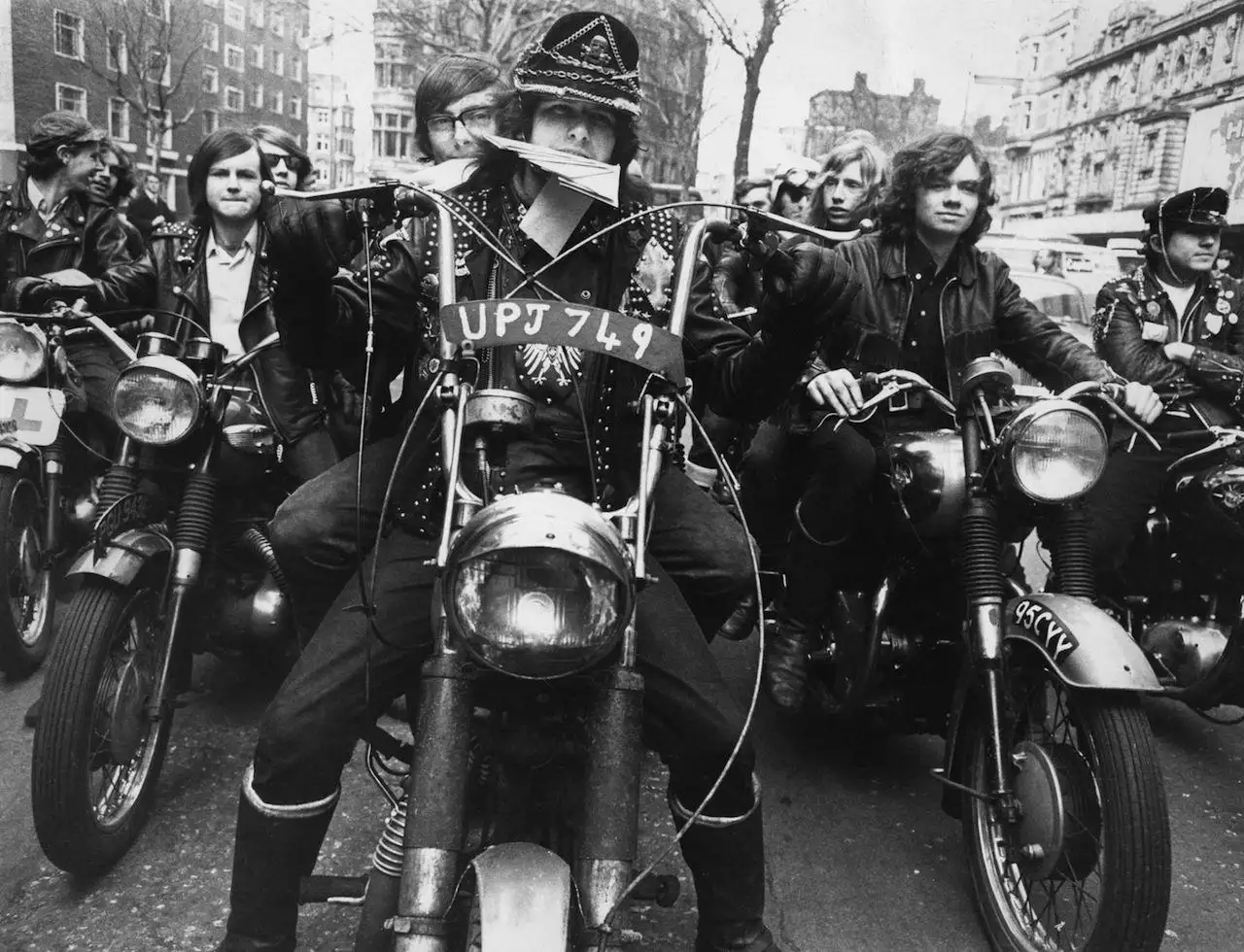You can tell that at superbikenewbie.com; I am fascinated with the 1% MC culture, given all of my posts on MCs and the MC culture.
To no one’s surprise, here is another one: what does 1 mean in motorcycle clubs? The story behind the 1%er label dates back to 1947, following a notorious motorcycle rally in Hollister, California. The American Motorcycle Association (AMA) claimed that 99% of motorcyclists were law-abiding citizens, and it was the remaining 1% that caused trouble at the event. This statement led to the adoption of the term “one-percenter” to describe outlaw motorcycle clubs and their members.
As you delve deeper into the world of motorcycle clubs, you’ll notice that the 1% patch and sometimes a tattoo, in addition, is often worn by members of these outlaw clubs, such as the Hells Angels, Bandidos Motorcycle Club, Pagans, and Outlaws Motorcycle Club. These clubs are not sanctioned by the AMA and are often linked to criminal activities.
By wearing the 1% symbol, members of these clubs proudly display their status as part of a distinct subculture in the motorcycle community.
Table of contents
- History of the 1% Motorcycle Clubs
- Structure and Hierarchy
- Membership and Initiation Process
- The 1% Patch and Club Colors
- Rules and Regulations of 1% Motorcycle Clubs
- Relationships with Law Enforcement and Criminal Organizations
- Community Involvement and Charitable Activities
- Lesser Known Facts About One Percenter Motorcycle Clubs
- Conclusion
History of the 1% Motorcycle Clubs
Origins and the Hollister Riot
One percent motorcycle clubs originated from an event that took place in 1947. The Hollister Riot occurred in Hollister, California, during a Gypsy Tour race sanctioned by the American Motorcyclist Association (AMA). This incident led to the creation of the term “One-Percenters.” These clubs are considered to be part of the outlaw motorcycle club culture and make up less than 1% of all bikers in the US. As a member of a 1% club, you’re dedicated to biking and the brotherhood of your MC. You are expected to live within the confines of the law, but 1% MCs have in the past and continue still to break the law.
Growth and Infamous Outlaw MCs
Over the years, several infamous 1% clubs have emerged. Some notable ones include the Hells Angels Motorcycle Club, Outlaws, Pagans, and Mongols. While these clubs do not adhere to AMA rules, each group has its own strict code of conduct for members. As part of a one-percenter motorcycle club, you won’t answer to anyone but your club’s specific rules. This seemingly implies that the club rules are above the law of the land. Defending the club territory, showing support for the club, and living the 1% outlaw motorcycle club lifestyle often put the MC members into conflict with the law!
It’s worth noting that the Harley Owners Group is not considered a one-percenter club. Instead, it is a community of Harley-Davidson motorcycle enthusiasts that enjoy the camaraderie and shared experiences with fellow riders.
Remember that as a member of a 1% motorcycle club, your commitment to the biking lifestyle and brotherhood sets you apart from the majority of bikers from normal riding clubs and bike clubs.
Structure and Hierarchy
In motorcycle clubs, understanding the structure and hierarchy is crucial to maintaining order and organization. This section will provide a brief overview of the club officers and roles, as well as the organizational structure of chapters within motorcycle clubs.
Club Officers and Roles
Motorcycle clubs typically have a formal hierarchy that plays a significant role in the club’s operations. Here are some common titles and roles you might find:
- Founder: The person who started the club and often holds the highest authority.
- President: Leads the club and makes important decisions.
- Vice-President: Supports the president and fills in when the president is unavailable.
- Secretary: Manages communication and documentation for the club.
- Treasurer: Handles the club’s finances and budget.
- Road Captain: Plans routes and leads rides, ensuring the safety of club members.
- SGT at Arms: Ensures order within the club and deals with security matters.
- Member: Regular club members who are considered full-patch members.
- Prospect: Potential members who are working towards gaining full membership.
- Enforcer: Provides security and enforces club rules.
As a member, you need to familiarize yourself with the various roles in motorcycle clubs so you know your responsibilities and who to turn to for guidance.
Chapters Organizational Structure
Motorcycle clubs often have multiple chapters, which can be regional or local. Each chapter usually follows the same organizational structure as the main club, with its own set of officers and members.
In larger clubs, it’s not uncommon for regional or national officers to oversee multiple chapters, ensuring that the club’s hierarchy remains consistent and efficient. As a member, you should be aware of your chapter’s structure and the roles of those within it.
When interacting with other chapters or clubs, it is important to respect and acknowledge the hierarchy within the motorcycle club community. This helps maintain harmony between organizations and ensures that members remain committed to their club’s goals and values.
Membership and Initiation Process
Prospects and the Road to Full Membership
As a prospective member of a motorcycle club, you will likely start off as a “prospect.” This phase of your journey allows you to learn the club’s values, traditions, and expectations while demonstrating your loyalty to the group. It’s an opportunity for both you and the club to decide if it’s the right fit.
During this period, your main responsibility is to support the club and its full members, often referred to as “patch holders.” You’ll be expected to attend club meetings, events, and rides, showing your dedication and commitment to the club’s cause. Remember, prospects must be open to feedback and willing to learn from their fellow bikers to succeed in this process.
Over time, you’ll be evaluated on your performance and dedication to the club. After proving yourself, you may be given the chance to become a full-fledged member, receiving your club’s patch and solidifying your identity as a biker within the club. You will be put to a full vote when deciding upon your future as a full-patch. Even if a single member objects, you will not be promoted.
The 1% Patch and Club Colors
Significance of the 1% Patch
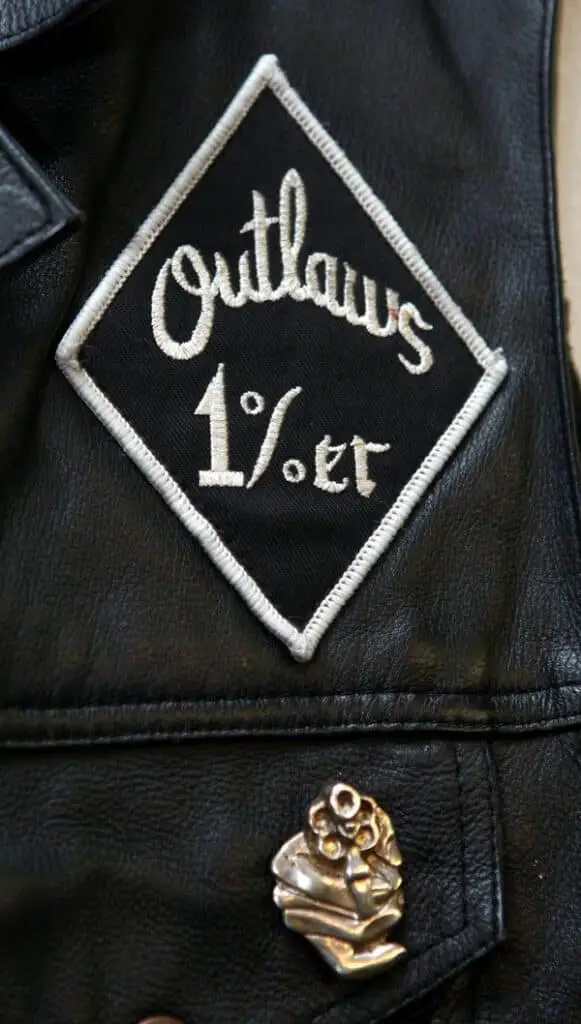
In motorcycle clubs, the “1%” patch holds great significance. It originated from a statement made by the American Motorcycle Association (AMA) in the 1940s following a series of high-profile incidents involving biker gangs. The AMA claimed that 99% of motorcyclists were law-abiding citizens, while the remaining 1% were outlaws. Biker clubs that considered themselves part of this 1% quickly adopted the 1% patch as a symbol of their outlaw status and to distinguish themselves from other clubs.
For 1% clubs, also known as “1%er” or “one-percenter” clubs, the patch signals that they do not follow AMA rules and instead have their own unique code of conduct. Members of these clubs, like the Hells Angels and Outlaws, proudly wear their 1% patches as a badge of honor, often indicating a willingness to engage in criminal activities.
Club Colors and Their Meanings
Club colors are the patches worn by motorcycle club members on cut-off vests or leather jackets to identify their affiliation with a specific club and its territorial location. Generally, they consist of a large central patch, featuring the club’s logo, a bottom rocker, and additional smaller patches, denoting the club’s name and chapter. Club colors serve as an essential method for biker club members to recognize and respect each other’s boundaries and affiliations.
For example, the Hells Angels’ primary club color consists of a Death Head logo with the words “Hells Angels” above it and the group’s geographic territory below. This design is considered sacred amongst club members, and unauthorized use or copying can trigger violent confrontations.
In summary, the 1% patch and club colors play a crucial role in defining the identity and affiliations of motorcycle clubs, especially those considered outlaw groups. The patches communicate essential information about a club’s values, territory, and members.
Rules and Regulations of 1% Motorcycle Clubs
Road Etiquette and Safety Procedures
In 1% motorcycle clubs, you are expected to follow strict road etiquette and safety procedures. As a member, it’s essential to respect the hierarchy within the club and demonstrate the brotherhood’s values. For instance, when riding in formation, you should always position yourself according to your rank and maintain a safe distance from other riders.
Also, it is important to stay focused when riding in a formation with other motorcycle riders. Since one mistake can have a domino effect, it takes a considerable amount of focus and energy.
Remember, your club’s reputation is vital, and maintaining proper road etiquette showcases the discipline and commitment of every member.
Conflict Resolution
Conflict resolution within 1% motorcycle clubs is crucial, as internal disputes can impact the club’s stability and jeopardize your brotherhood.
When conflicts arise, you must follow the established procedures for addressing issues within the club.
This often involves discussing the matter openly with club leaders or seeking mediation from higher-ranking members. It’s critical to remain loyal to your club throughout the process and prioritize the club’s interests above your personal grievances.
Fines
Your club may impose fines as a form of discipline or to ensure the continued operation and stability of the club.
You are expected to adhere to the rules and regulations set forth by your club, as violating them may result in financial penalties. Fines can also be levied for failure to fulfill club obligations, such as not attending mandatory meetings or evading club-related responsibilities.
Remember, your club relies on members like you for its income and resources, so it’s essential to value the commitment and contribute as expected.
Relationships with Law Enforcement and Criminal Organizations
Interaction with Law Enforcement Agents
As a member of a 1% motorcycle club, you should be aware that your affiliation could lead to increased attention from law enforcement agencies. Outlaw motorcycle clubs have a long-standing history of confrontations with the police and are often on their radar due to their associations with criminal activities.
They are often referred to as Outlaw Motorcycle Gangs by law-enforcement in online literature.
Your club may be subject to regular surveillance and have a higher likelihood of interactions with police during club events like rallies and parties. Keep in mind that members of 1% clubs often face legal troubles due to their involvement in violent crimes such as extortion, weapon- and drug-trafficking, and violence.
1% Clubs and the Mafia
The 1% motorcycle club culture carries a notorious reputation for its connections with various criminal organizations, including the Mafia. Some members of clubs like Hells Angels, Outlaws, Bandidos, and Pagans are known to have collaborated with Mafia members on criminal activities. It’s important for you to understand the potential risks and consequences of being involved in a club with such connections.
As a Harley Davidson rider and club member, be cautious when interacting with other members of the club and ensure you’re not entangling yourself with criminal operations. The Department of Justice often targets outlaw motorcycle clubs in its efforts to crack down on organized crime, so staying away from illegal activities will help you avoid unwanted legal complications.
Community Involvement and Charitable Activities
In a motorcycle club, particularly those that value community involvement and charity work, you’ll often find members organizing and participating in various activities to give back. By joining a motorcycle club, you can become part of a supportive group that shares your passions and helps make a positive impact on your local community.
Many clubs have chapters in different locations, allowing members to work together with others from their area. This also enables the motorcycle community to extend its outreach for charitable causes.
When it comes to charity, motorcycle clubs are known for supporting various causes, including local charities and organizations that cater to different needs. Some examples of charitable activities that motorcycle clubs may engage in are:
- Organizing charity rides and events to raise funds for a cause
- Participating in food drives for local food banks
- Volunteering at homeless shelters, helping with cleanup efforts, or rebuilding homes for those in need
- Supporting children’s hospitals and organizations that provide aid to children with illnesses or disabilities
Being involved in these types of activities not only allows you to give back to your community, but also helps to build a sense of connection and camaraderie among club members. This is an essential aspect of the motorcycle community–strengthening relationships between riders who share similar values and dedication to helping others.
Remember, joining a motorcycle club with a focus on community involvement and charitable activities can potentially offer you several benefits. You’ll have the opportunity to make a difference in your community, forge strong connections with fellow members, and create lasting, positive memories for yourself and others.
Lesser Known Facts About One Percenter Motorcycle Clubs
One Percenters Enjoy Surprising and Shocking The People Around
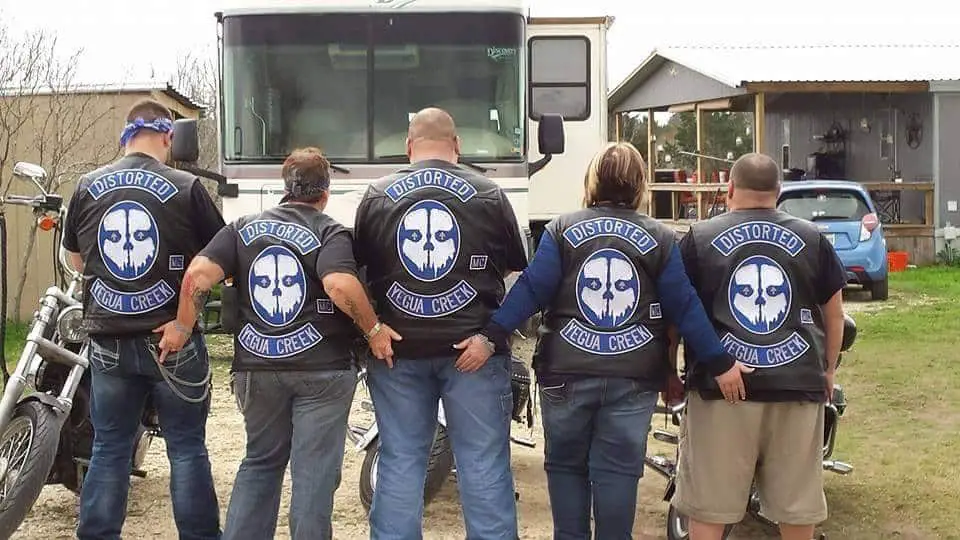
One aspect you might not be aware of is that one percenters, such as the Hells Angels, often enjoy surprising and shocking people around them.
For instance, the iconic Hells Angels greeting kiss is their way of asserting dominance while also displaying a sense of camaraderie among fellow riders. Or have a look at the Distorted MC here.
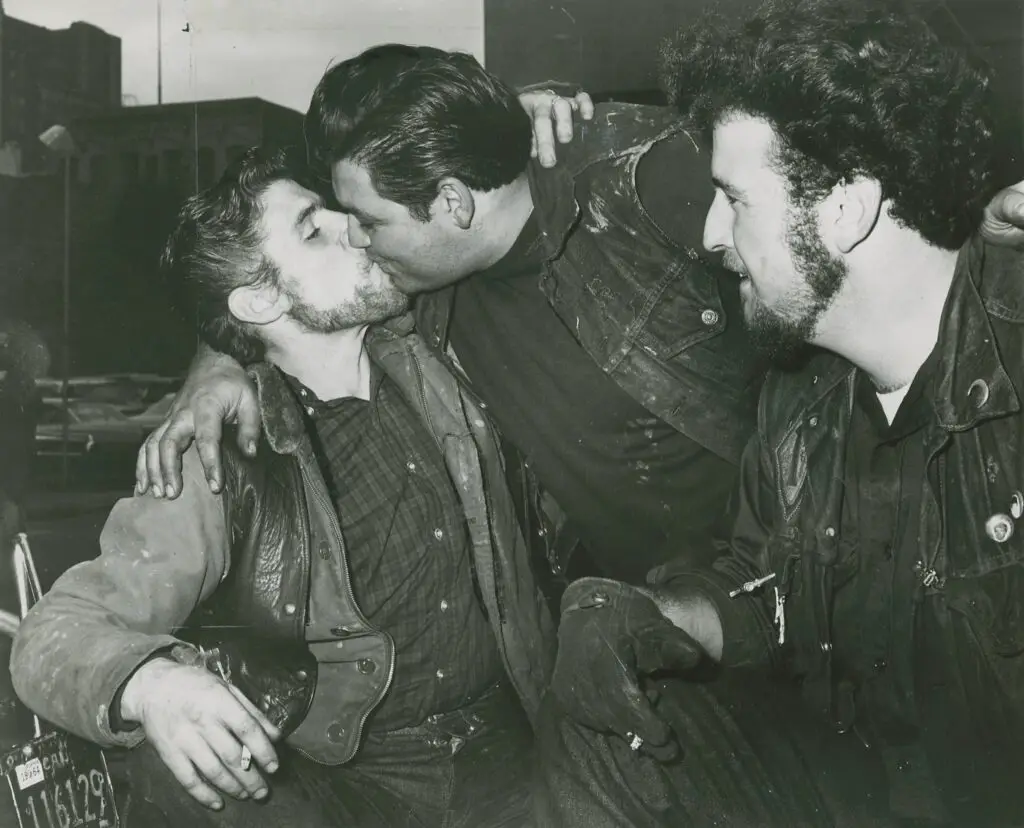
Leaving A One Percenter MC Is Not Easy
If you’re thinking about joining a one-percenter motorcycle club, know that leaving such a club can be tricky. These clubs are known for their strong bonds, and walking away can be a difficult decision with potential consequences.
One Percenter MCs Have A Hierarchy
It’s essential to understand that one-percenter MCs have a clear structure. They operate with an established hierarchy where members have varying levels of authority and responsibility. This order maintains discipline and ensures smooth functioning within the club.
Memberships Open To Males Only
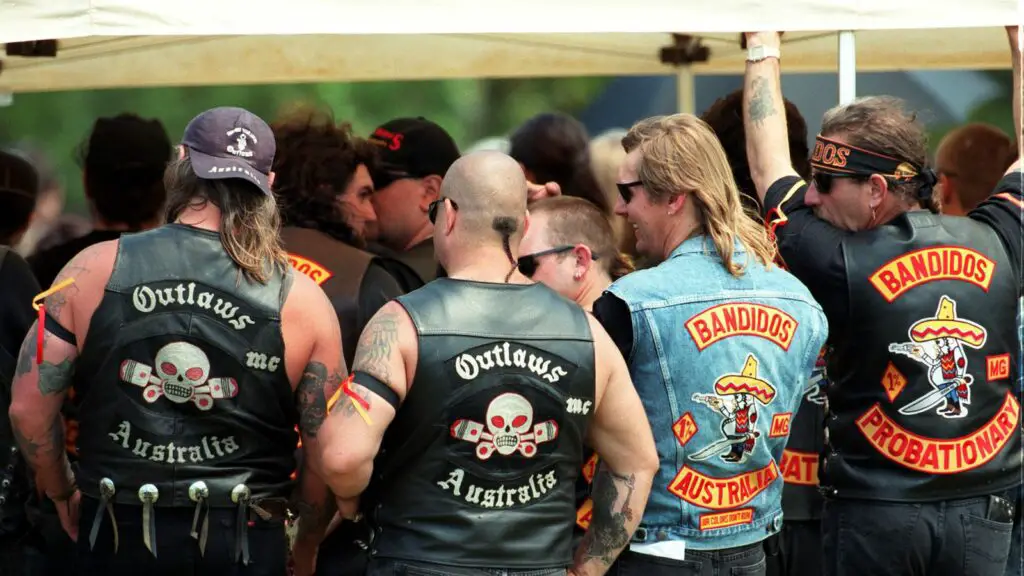
In case you’re wondering, one percenter MCs typically have male-only memberships. These clubs have a long-standing tradition of being exclusively for men, which means women cannot join as official members. Some 1 percenter MCs reportedly have a white supremacist outlook!
They Are Involved In Charity
Contrary to popular belief, not all one-percenter motorcycle clubs are involved in criminal activities, and many of them actively participate in charity events. These clubs often organize rides and fundraisers to support various causes and help their local communities.
Not Necessarily Criminal
Finally, it’s essential to recognize that not all one-percenter MC members have criminal records or engage in criminal activities. While some individuals may have a history with the law, many others lead law-abiding lives, participating in the club as a way to bond with fellow riders and enjoy their shared passion for motorcycles.
Conclusion
What Does 1 Mean In Motorcycle Clubs? The origin of this term can be traced back to the 1947 AMA motorcycle rally incident in Hollister, California. It was then that the AMA stated that 99% of motorcyclists were law-abiding, and 1% were not.
As a member of a 1% motorcycle club, you’re part of a unique subculture that values commitment to biking and brotherhood above all else. These clubs often embrace an outlaw lifestyle, differentiating themselves from the majority of law-abiding motorcyclists. However, it’s crucial not to assume that all 1%ers are involved in illegal activities or inherently dangerous.
When encountering the number “13” in a motorcycle context, it’s worth noting that this symbol is often associated with one-percenter motorcycle clubs. This numerical emblem, typically featured on a diamond-shaped patch, can be found displayed on the jackets of some bikers. I have covered this topic, including what the 13th letter of the alphabet could mean in detail.
Ultimately, understanding the meaning and history behind the “1%” term provides insight into the motorcycle club community’s distinct and diverse nature. Ensure not to generalize or overlook the many nuances of this fascinating subculture. Keep in mind the various aspects of 1%ers and their dedication to their passion for biking and their strong sense of brotherhood.
